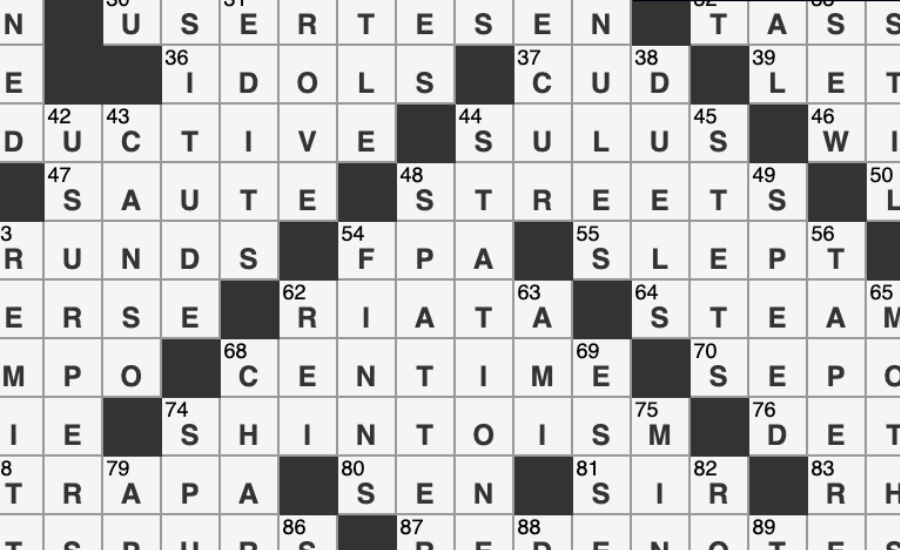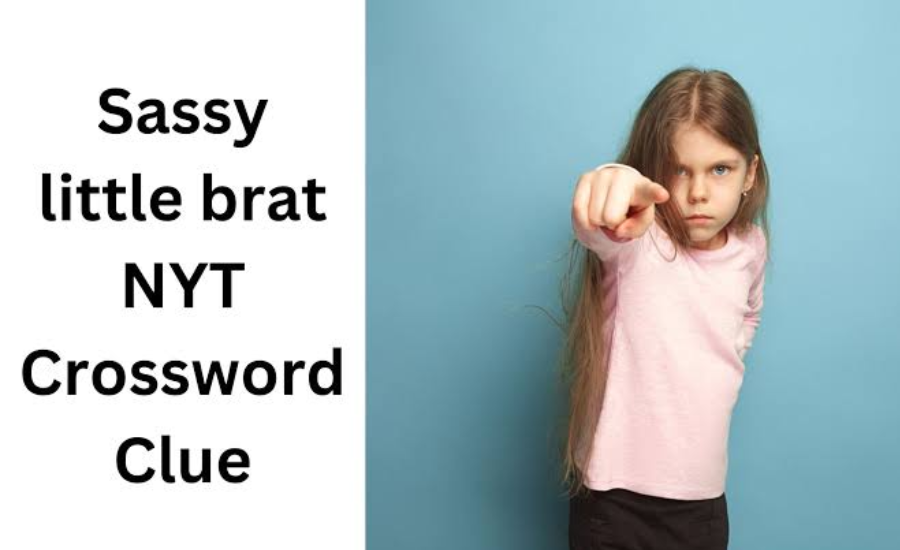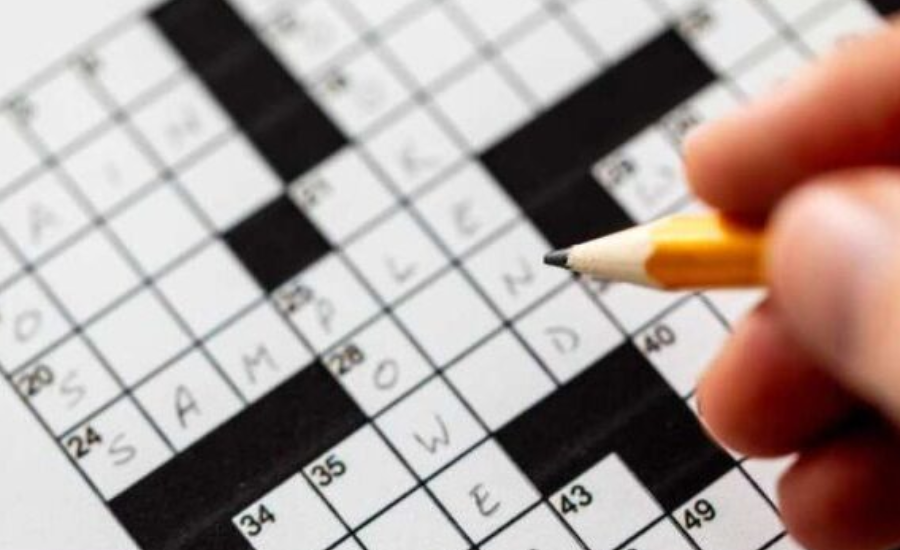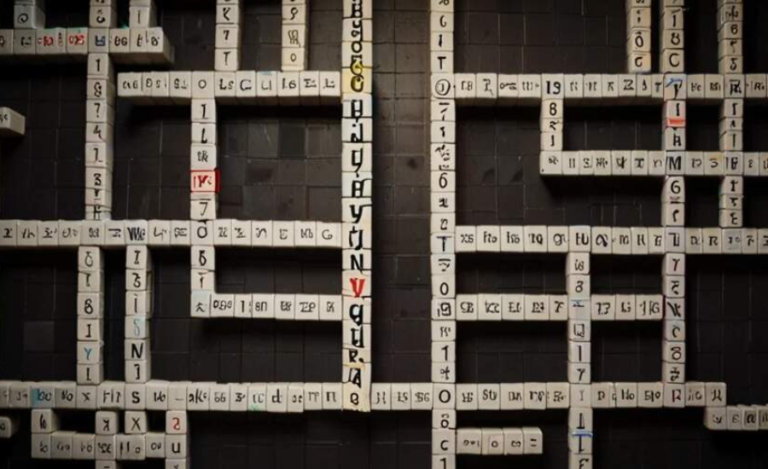If you’re an avid crossword solver, particularly when tackling puzzles from prominent publications like the New York Times, you may have come across some head-scratching clues that seem almost impossible to crack. One such example is the phrase “sassy little brat nyt crossword clue.” While the clue may appear straightforward, it often proves to be more difficult to decode than it first seems. The challenge lies in how certain words or phrases, although common, can have multiple interpretations depending on the puzzle’s context. Solving such clues requires more than just knowledge of the dictionary; it demands creative thinking, wordplay skills, and sometimes a bit of intuition.
For those who relish the thrill of cracking a particularly elusive clue, this is part of the appeal that makes crossword puzzles so rewarding. The “sassy little brat nyt” clue is a perfect example of how a seemingly simple phrase can throw you off track. Many crossword enthusiasts enjoy these challenges because they test both your vocabulary and your ability to think outside the box. By understanding the structure of the puzzle and the potential for double meanings, you can approach these tricky clues with more confidence. Whether you’re solving for leisure or striving for the perfect time, the process of unravelling a difficult clue is what keeps many coming back for more.
The Cultural Significance of the New York Times Crossword Puzzle

The New York Times Crossword Puzzle holds a prestigious place in the world of puzzles, becoming much more than a mere daily activity. Over the years, it has evolved into a cultural touchstone that draws puzzle enthusiasts from all walks of life. Each puzzle presents a blend of simple and complex clues, which engage solvers in a way that’s both fun and intellectually stimulating. The puzzles often feature a delightful combination of wordplay, clever puns, and references to current events or pop culture, making them a unique blend of entertainment and education.
Solving a New York Times crossword is not just about filling in squares; it’s about experiencing a challenge that pushes the boundaries of your knowledge and creativity. For experienced solvers, a tricky clue can be both frustrating and rewarding, as it requires a deep understanding of language and sometimes an unconventional approach. Even clues that seem straightforward, like the one involving a “sassy little brat nyt,” can present an intriguing puzzle that takes a little more thought to crack. These clues add layers of complexity and intrigue that keep solvers coming back day after day.
What makes the New York Times Crossword so special is its ability to cater to solvers of all skill levels. Whether you’re a beginner or a seasoned pro, each puzzle offers something to learn and explore. The satisfaction of solving a particularly challenging clue, such as one that might reference a “sassy little brat nyt,” is unmatched. It’s this combination of fun, challenge, and intellectual stimulation that has helped the crossword puzzle remain a beloved pastime for decades. It’s not just a game, but a tradition that continues to evolve, keeping both casual solvers and dedicated fans engaged year after year.
How Crossword Puzzles Push the Boundaries of Language and Logic
Crossword puzzles have an undeniable appeal that keeps players engaged, and it’s largely due to the excitement of solving complex clues. The process of decoding clues, filling in answers, and seeing the puzzle come together can be incredibly satisfying. While some clues are easy to crack, others are more challenging, requiring deeper thought and a more creative approach. A clue like “sassy little brat nyt” might seem simple at first, but it can be elusive, pushing solvers to think outside the box and consider multiple meanings and interpretations. These tricky moments are what make crossword puzzles so captivating—they constantly test one’s mental flexibility and vocabulary.
The addictive nature of crosswords lies in their ability to challenge both the mind and language skills. Even when a solver feels confident in their abilities, a tough clue can suddenly stump them, creating an opportunity for growth and learning. The “sassy little brat nyt” clue is a perfect example of how a familiar phrase can take on a new twist, requiring solvers to dive into their reservoir of wordplay and synonyms. It’s this element of surprise and the satisfaction of cracking a difficult clue that keeps solvers coming back for more.
Solvers often return to crossword puzzles because of the intellectual stimulation they provide. Each puzzle is an opportunity to exercise one’s cognitive abilities, expand their knowledge, and refine problem-solving skills. The challenges presented by clues like “sassy little brat nyt” are what make these puzzles so enjoyable and rewarding. As solvers continue to work through each puzzle, they experience a sense of accomplishment with each answer, which fuels the desire to tackle the next one. This sense of satisfaction, combined with the joy of solving puzzles, ensures that crosswords remain a favourite pastime for many.
Understanding the Meaning Behind “Sassy Little Brat”

The term “sassy little brat” typically brings to mind a playful and cheeky individual, often mischievous and full of attitude. It describes someone who might push boundaries or act with confidence and a bit of rebellion. However, in the world of crossword puzzles, this phrase is not meant to be taken at face value. Instead, the clue encourages solvers to think creatively and explore multiple meanings. The goal is to find a word that not only fits the definition but also works within the structure of the crossword grid. In the case of the “sassy little brat nyt” clue, this kind of flexibility in thinking is essential for cracking the code.
The Importance of Personality in Crossword Clues
Crossword puzzles frequently use personality traits or descriptive terms to craft clues that are both challenging and entertaining. Words like “sassy” and “brat” not only describe behaviours but also imply specific attitudes or temperaments. The puzzle setter’s task is to combine these terms in a way that fits neatly into the crossword’s format while maintaining a certain level of complexity. Solvers must consider how different words or phrases can be cleverly employed to express these characteristics succinctly, often requiring an understanding of language nuances and a bit of wordplay.
How Language is Manipulated in Crossword Solving
When solving a crossword clue like “sassy little brat nyt,” it’s not just about finding the right word but about recognizing the many ways language can be shaped. Crossword setters often use wordplay, synonyms, and indirect meanings to guide solvers toward the correct answer. The challenge lies in finding a word that encapsulates the personality traits described by “sassy” and “brat” in a way that fits the puzzle’s requirements. This demands a deep knowledge of vocabulary and a keen ability to manipulate language, making crossword solving a rewarding exercise in both creativity and linguistic mastery.
Exploring the Meaning of “Sassy”
The word “sassy” is full of personality, often used to describe someone who displays boldness, confidence, and a lively attitude. It implies a sense of playfulness mixed with a bit of defiance. In the context of crossword puzzles, the term “sassy” can be interpreted in a variety of ways, depending on the surrounding clues. Solvers may encounter synonyms such as “feisty,” “impudent,” or even “audacious,” all of which capture different aspects of the word’s meaning. Crossword creators might lean on these alternatives based on the number of letters needed to complete the puzzle grid, offering solvers a range of possibilities when trying to crack the clue.
The Range of Synonyms for “Sassy”
When faced with a crossword clue that asks for a synonym of “sassy,” solvers should consider a broad spectrum of potential words. Some of the most common alternatives include “cheeky,” “brazen,” and “spunky.” Each synonym carries its own slight variation in meaning, with “cheeky” emphasising mischievousness, “brazen” indicating audacity or shamelessness, and “spunky” highlighting energy and boldness. The puzzle setter might select any of these words to fit the puzzle’s structure, making it important for solvers to remain flexible and consider all options to find the right fit. This can be especially challenging when the clue is phrased in a tricky or indirect way, like the “sassy little brat nyt” crossword clue.
The Influence of Culture on the Meaning of “Sassy”
The word “sassy” is not only a descriptor of behaviour but also carries cultural weight, often associated with characters in popular media. In television shows, movies, and books, a “sassy” character is frequently portrayed as outspoken, confident, and sometimes irreverent. This cultural connotation adds another layer of meaning, especially when crossword creators draw from pop culture in their clues. Understanding these references can give solvers an edge, as many puzzles are crafted with cultural knowledge in mind. For example, a clue for “sassy” might be designed to evoke a particular TV or film character who embodies this bold attitude, guiding the solver toward the right word.
The Meaning and Origins of “Brat”
In contrast to “sassy,” the word “brat” carries a more negative connotation, usually referring to a child who is spoiled, unruly, or difficult to manage. It suggests behaviour that is irritating or entitled, often in a way that challenges authority or social norms. In crossword puzzles, the term “brat” is often used to convey this sense of misbehaviour or unpleasantness, typically in conjunction with another word like “sassy” to describe a particularly bold or cheeky individual. The combination of these two words can create a unique challenge for solvers, requiring them to think about how both terms function together within the grid.
The Evolution of the Word “Brat”
The word “brat” has undergone significant evolution over the centuries. Originally, it was used as a general term for a child, without the negative or derogatory implication. Over time, however, its meaning shifted, and it began to be associated with children who were difficult, spoiled, or misbehaving. This shift in meaning has made “brat” a word with a more critical tone, particularly when used in modern language. Understanding the historical development of the word can help solvers recognize its connotations in different contexts, particularly in crossword puzzles where clues might subtly reference the world’s evolution.
The Contemporary Use of “Brat”
Today, the term “brat” is often used to describe individuals, typically children or young people, who are perceived as spoiled, entitled, or disrespectful. In the context of crossword puzzles, this modern interpretation can influence the answers provided, especially when paired with words like “sassy.” The combination of “sassy” and “brat” could suggest a mischievous or rebellious character, leading solvers to consider words that describe someone with both a bold attitude and an irritating disposition. Whether used in a playful or more critical tone, the word “brat” continues to be a common tool for crossword setters looking to convey a specific type of behavior in their clues.
Effective Approaches for Solving Crossword Clues

When tackling a challenging crossword clue like “Sassy Little Brat,” it’s essential to have a structured approach. Begin by analysing the clue in its entirety—break it down into individual components such as potential synonyms, the overall tone, and the required letter count for the answer. At times, the solution may be a word you’re familiar with, but it could be used in a unique or unexpected context. These tricky clues are designed to test your vocabulary, problem-solving skills, and ability to think outside the box.
Identifying Patterns in Similar Clues
Personality-related clues are common in crossword puzzles. For instance, clues such as “Cheeky rascal” or “Mischievous kid” follow a similar framework to the “Sassy Little Brat” clue. By reviewing past puzzles with comparable wording, you can gain insight into the types of answers that might fit. These types of clues often rely on conveying a sense of playfulness, defiance, or mischief, and recognizing this pattern can make it easier to determine the solution when similar clues arise.
Exploring Potential Answers for “Sassy Little Brat”
When solving the “Sassy Little Brat” clue, the answer will likely be a word that embodies both boldness and mischievousness. Depending on the grid size, some possible solutions could include terms like “Imp,” “Scamp,” or “Rascal.” Each of these words captures the essence of someone who is not only a bit cheeky or sassy but also displays behaviour associated with being troublesome or playful in a slightly rebellious way. Recognizing the appropriate length for the answer can further narrow down your options.
Matching the Solution to the Clue’s Spirit
The most successful crossword answers are those that fit both the letter count and the tone of the clue. For example, the word “Imp” is a perfect fit for a clue like “Sassy Little Brat.” It’s concise and effectively encapsulates both the attitude and the mischief implied in the clue. When solving crossword clues, it’s important to ensure that the answer doesn’t just fit physically within the grid, but also aligns with the wordplay and meaning embedded in the clue itself.
Using Context to Assist in Finding the Right Answer
Crossword puzzles often require solvers to use surrounding clues to make educated guesses. If you’re unsure about “Sassy Little Brat,” solving adjacent clues can provide valuable context. The letters you fill in from these surrounding clues will often help you refine your options for the current clue, making it easier to find the correct answer. The interconnected nature of crossword puzzles means that one solution can often provide the necessary clues to solve others, creating a more cohesive puzzle-solving experience.
Leverage Letter Combinations and Eliminate Possibilities
Once you’ve filled in a few letters based on other clues, use the process of elimination to further narrow down your answer options. Pay close attention to how the letters in the solution for “Sassy Little Brat” intersect with letters from nearby answers. For instance, if the word “Imp” fits the clue’s meaning and the available grid space, and the letters match with neighbouring words, you’ll have a strong indication that it’s the correct choice. The more you engage with the crossword as a whole, the clearer the answer will become.
The Appeal of Solving Difficult Crossword Clues

Crossword puzzles have an enduring appeal because they offer a unique challenge that stimulates various aspects of our thinking. The process of solving a complex clue requires a blend of logic, creativity, and knowledge. It’s this multifaceted challenge that makes crosswords so popular and enjoyable for solvers of all levels. Engaging in this mental exercise not only sharpens cognitive abilities but also provides a satisfying sense of achievement when you crack a difficult clue.
The Joy of Unlocking the Correct Solution
There’s a special kind of satisfaction that comes with solving a tough crossword clue, like the one for “Sassy Little Brat.” When you finally land on the right word, especially after struggling through different possibilities, it’s like unlocking a hidden treasure. This sense of accomplishment, no matter how small the puzzle may seem, brings immense personal fulfilment. It’s this little victory that motivates solvers to keep coming back for more, pushing through the tricky clues for the pleasure of discovering the correct answer.
Why Crossword Puzzles Are So Engaging
The satisfaction derived from solving crossword clues is one of the key reasons why these puzzles have remained popular for so long. Every time you successfully solve a challenging clue, your brain gets a workout, which not only feels rewarding but also helps improve problem-solving and critical thinking skills. The wordplay and cleverness involved in creating and solving crosswords make them a timeless and appealing activity for those who enjoy a mental challenge, like the one presented by the “Sassy Little Brat” clue.
Conclusion
In conclusion, solving crossword clues like “sassy little brat” requires a blend of creative thinking and vocabulary skills. By breaking down clues, considering synonyms, and using intersecting answers, solvers can enhance their puzzle-solving abilities. The challenge and fun of crossword puzzles, especially in renowned publications like the New York Times, lies in their ability to engage and stimulate the mind while providing a rewarding sense of accomplishment.
FAQs
Q1. What does the clue “sassy little brat” mean in a crossword puzzle?
A. This clue is designed to describe a mischievous or cheeky person, requiring solvers to find a word that fits both the tone and meaning.
Q2. How can I solve challenging crossword clues like this?
A. To solve tricky clues, break them down into simpler parts, use synonyms, and rely on intersecting answers to guide your guesses.
Q3. What are some possible answers for “sassy little brat”?
A. Possible answers could include terms like “imp,” “rascal,” or “scamp,” which describe a playful or mischievous character.
Q4. Why do crossword puzzles use clues like this?
A. Crossword puzzles aim to challenge solvers’ creativity and vocabulary, making them engaging and intellectually stimulating. They encourage outside-the-box thinking.
Q5. What makes the New York Times crossword so popular?
A. Its clever wordplay, diverse clues, and cultural relevance make the NYT crossword a favourite for puzzle enthusiasts, offering both challenge and entertainment.
Stay Connected for the Latest News and Alerts: Toonily
